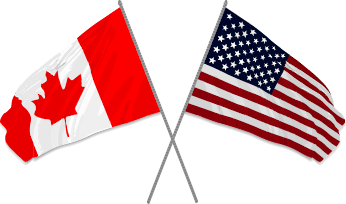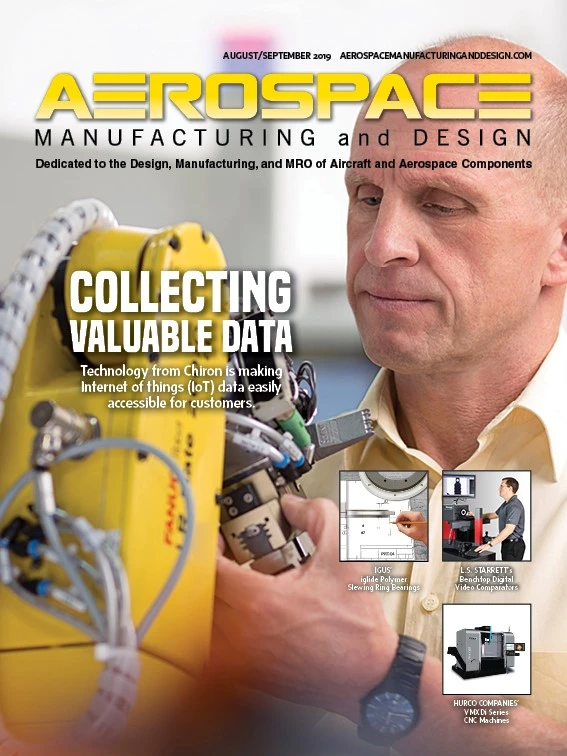
Canada has the world’s fifth largest aerospace industry, behind the United States, France, Germany, and the United Kingdom.
High-profile Canada-based aerospace manufacturers include Bombardier, Pratt & Whitney Canada, Boeing Canada, and Bell Helicopter, and more than 700 Canadian businesses are directly involved in aerospace manufacturing.
In Canada, 85% of aerospace manufacturing focuses on commercial aviation, including the rapidly growing maintenance, repair, and operations (MRO) subsector. Companies such as Ontario-based Safran and Quebec-based Heroux-Devtek are international leaders in aircraft landing and braking systems, while Ontario’s Magellan Aerospace produces aero-engine and aerostructure assemblies and components.
While about 75% of Canadian aerospace output is exported, manufacturers traditionally look beyond Canada for components and parts. The United States is the leading supplier to the Canadian aerospace industry, which makes Canada the fourth largest market for U.S. aerospace exports. According to the U.S. International Trade Administration, 2017 aerospace exports to Canada were worth $9.2 billion.
Prospects for Canada’s aerospace sector look very promising, as demand is expected to outpace supply through 2021. So, U.S. aerospace businesses interested in expanding to Canada will likely find a strong market.
Due to favorable trade incentives, customs enhancements, and logistics innovations, it’s never been easier to reach the Canadian market.
Trade incentives
Aerospace products are specifically addressed by several international trade agreements, including the North American Free Trade Agreement (NAFTA), which remains in effect while its proposed replacement, the United States-Mexico-Canada Agreement (USMCA), is under review. NAFTA provides duty-free status to products that meet the agreement’s domestic content requirements, and duty-free status will continue under the proposed USMCA.
Other trade incentives include:
- World Trade Organization (WTO) Agreement on Trade in Civil Aircraft (ATCA) – U.S. and Canada are signatories; allows non-defense aerospace exports to enter Canada duty-free
- U.S.-Canada Bilateral Aviation Safety Agreement (BASA) – Facilitates airworthiness approval of FAA-approved U.S. civil aerospace products by Transport Canada
- Defense Production Sharing Agreement (DFSA) – Allows U.S. companies to bid on Canadian government procurement opportunities
- International Traffic in Arms Regulations (ITAR) – Restricts the export of defense and military-related products and technologies; includes an exemption for certain U.S aerospace items bound for Canada
An important caveat about these trade incentives: a business must be proactive in securing benefits. Customs agents will not proactively assign duty-free status to a shipment or suggest other potential opportunities for savings, and with products that fall under the scope of ITAR, a shipment may be denied entry unless required documentation and permits are presented.
Since most businesses don’t have in-depth knowledge of current trade agreements, an experienced logistics provider or customs broker can identify applicable provisions and ensure shipments arrive at the border with all documentation.
Hassle-free customs
All shipments must undergo thorough examination by Canada Border Services Agency (CBSA), but there are opportunities to facilitate the process and mitigate duty obligations and customs fees.
Canada’s Non-Resident Importer (NRI) program allows U.S. businesses to charge Canadian sales taxes at time of purchase and serve as the importer of record in clearing shipments into Canada. Without NRI status, sales taxes and fees are paid at the time of delivery, which can frustrate Canadian customers who assume those taxes were paid upfront.
Aerospace products are often subject to review by other Canadian agencies, referred to as other government departments (OGDs), that impose documentation and permit requirements that must be satisfied before a shipment is cleared for entry. A business runs the risk of clearance delays if shipments arrive at the border with outstanding OGD requirements.
Canada’s transition to a Single Window Initiative (SWI) is another important consideration. Through the SWI, importers have a single filing system for submitting required information to CBSA, including nine OGD partner agencies. SWI eliminates paperwork and redundancies, streamlines the process, and facilitates shipment clearance. Importers must ensure their logistics partner or customs broker is a registered SWI user that has invested in an SWI-compliant technology system.
Canada’s Auditor General reported in 2017 that roughly 20% of shipments arrive at the border with an incorrect tariff classification code listed. Since tariff classification codes determine a shipment’s tariff rate and eligibility for free trade agreement benefits, it’s important to ensure the proper code is assigned.
A final option for facilitating the clearance process is to take advantage of U.S. and Canadian trusted trader programs, which offer clearance incentives to businesses that undergo rigorous application screenings and certify the security of their supply chains. In the United States, the primary trusted trader program is the Customs-Trade Partnership Against Terrorism (C-TPAT) program, and in Canada, it’s Partners in Protection (PIP). A business can either seek its own membership or enlist the services of a participating logistics provider.
The right partner
Most aerospace suppliers are held to manufacturers’ rigid delivery schedules, allowing little margin for error. This can be especially trying for U.S. companies, which have the added hurdle of clearing an international border. Because of technology-based advances, logistics solutions are available that ensure on-time, highly efficient deliveries to Canada.
However, not all logistics companies have the same capabilities, and the key is to partner with an experienced provider that understands the Canadian market and has access to technology-based solutions for greater efficiency and flexibility.
Considerations include:
- Reduced transit times: With the right logistics partner, ground shipments can be delivered to Canada in two days; traditional service took an average of four days. Logistics companies that rely on established carrier networks instead of owning their assets can use technology to pinpoint the best possible solution for a shipment and avoid forcing shippers into rigid carrier schedules.
- Seamless service throughout Canada: Most Canadian carriers do not provide comprehensive service across Canada, often patching together solutions using regional carriers. For aerospace shipments, often highly fragile and time-sensitive, this approach is fraught with risk. Instead, a business should take the time to identify experienced providers with access to all Canadian provinces and territories.
- Service to non-urban areas: While roughly 80% of Canada’s aerospace manufacturing takes place in Quebec (52%) and Ontario (28%), well-served by transportation companies, a U.S. business must consider deliveries to less-developed regions. It’s important to ensure that a logistics partner can provide guaranteed, on-time deliveries to more remote regions.
- U.S.-based sourcing: In many instances, faster access to the Canadian market has allowed U.S. businesses to eliminate the need for a Canadian distribution center. Instead, inventory is sourced in the United States and regularly transported either directly to customers or to strategically located warehouses.
- Consolidation services: Consolidation of smaller shipments can be effective to reduce freight costs and facilitate the clearance process. Shipments combined into a single, larger unit often qualify for reduced rates, passing through customs as a single unit.
With Canadian aerospace companies sourcing more than 50% of parts from the United States, global demand for Canadian equipment will continue to be a boon for U.S. suppliers. With significant trade incentives, customs efficiencies, and logistics capabilities to help guide the way, U.S. suppliers should take advantage.

Explore the August September 2019 Issue
Check out more from this issue and find your next story to read.
Latest from Aerospace Manufacturing and Design
- AAMI project call submission deadline extended to May 12
- Jergens launches cast iron tooling column additions
- Airbus to acquire assets relating to its aircraft production from Spirit AeroSystems
- FANUC America's Cobot and Go web tool
- Chicago Innovation Days 2025: Shaping the future of manufacturing
- High-density DC/DC converters for mission-critical applications
- #59 - Manufacturing Matters: Additive manufacturing trends, innovations
- ACE at 150: A legacy of innovation and industry leadership





